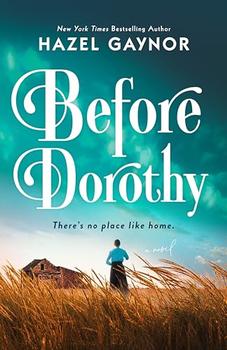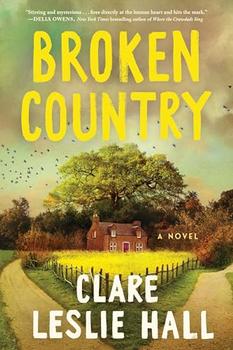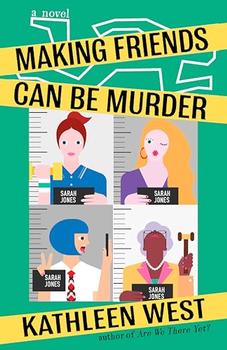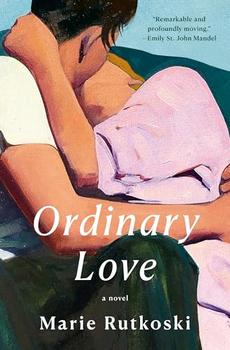Summary | Excerpt | Reviews | Beyond the Book | Read-Alikes | Genres & Themes | Author Bio

This article relates to A Net for Small Fishes
 The heroine of Lucy Jago's A Net for Small Fishes, Anne Turner, has a unique claim to fame: she holds the patent for the saffron-yellow starch that is taking the Jacobean fashion world by storm. Jago beautifully depicts the colorful world of the court at Whitehall, where all the courtiers are constantly trying to outdress each other. However, there were rules to follow in the court when it came to clothing, and they weren't simply a perceived matter of taste. Rather, these rules, which were in the "sumptuary" category — from the Latin sumptuarius, or "belonging to cost or expense" — were codified into law. This was done both to prevent overspending on luxurious materials and to create a visual stratification between social classes.
The heroine of Lucy Jago's A Net for Small Fishes, Anne Turner, has a unique claim to fame: she holds the patent for the saffron-yellow starch that is taking the Jacobean fashion world by storm. Jago beautifully depicts the colorful world of the court at Whitehall, where all the courtiers are constantly trying to outdress each other. However, there were rules to follow in the court when it came to clothing, and they weren't simply a perceived matter of taste. Rather, these rules, which were in the "sumptuary" category — from the Latin sumptuarius, or "belonging to cost or expense" — were codified into law. This was done both to prevent overspending on luxurious materials and to create a visual stratification between social classes.
Some of the first recorded sumptuary laws are from Ancient Greece and Rome. For example, Athenian sumptuary laws, were, according to Encyclopædia Britannica (1911), "directed principally against the extravagance of female apparel…dowries of excessive amount…costly banquets…and expensive funeral solemnities." In Rome, only the emperor and his household were permitted to wear the color purple, partially because the dye used to create the color was incredibly expensive and labor-intensive. Sumptuary laws were deeply entrenched in the Chinese dynasties as well. According to researcher Joseph Bosco, under the Qing emperors (starting in the 17th century) these rules "enforced Confucian notions of hierarchy, modesty, and restraint and limited the display and spending of the wealthy." In A Net for Small Fishes, the focus is on the rules and regulations throughout the court of James I, who inherited the English throne from Elizabeth I. Both of these rulers had their own unique takes on sumptuary laws.
Under Elizabeth, blue ruffs were outlawed, as they were too similar to the color of the Scottish flag. Under James, blue ruffs were allowed, but gold was off limits to the majority of the population at court. (This is where Anne's yellow starch came in — while expensive, it was a lookalike for gold that could mimic that forbidden material.) Yet under both Elizabeth and James, these different laws were often flouted as people sought to show off their wealth and gain footholds in various social circles, activities which are highlighted by Anne's actions in A Net for Small Fishes.
In Jago's novel, while the nobility she dresses can often get away with ignoring these rules, Mistress Turner is not always given the same allowances because of her lower social status. Similarly, in 1565, servant Richard Walweyn was arrested for wearing "a very monsterous and outraygous greate payre of hose." While noblemen were allowed to pad their stockings to create the illusion of shapely calves, the lower classes were not allowed to do the same, or if they were, there were certain limits to the material they were allowed. Another example of lower-class individuals being punished for disobeying sumptuary laws was when an attorney in the 1570s wore "'apparel unfit for his calling," including "a guilt rapier [and] extreame greate ruffes." The nobility who took offense to the attorney's dress banished him from their sight and recommended that he lose his position.
A Net for Small Fishes perfectly captures a precipitous moment at the peak of English fashion. The period's flamboyance allowed yellow ruffs to flourish in court and for their inventor to achieve both her social successes and staggering fall, as encapsulated in Jago's brilliant novel.
Portrait of Dorothy Cary, later Viscountess Rochford (c. 1614-1618) by William Larkin, featuring a Jacobean era embroidered jacket
Filed under People, Eras & Events
![]() This "beyond the book article" relates to A Net for Small Fishes. It originally ran in January 2022 and has been updated for the
November 2022 paperback edition.
Go to magazine.
This "beyond the book article" relates to A Net for Small Fishes. It originally ran in January 2022 and has been updated for the
November 2022 paperback edition.
Go to magazine.



Making Friends Can Be Murder
by Kathleen West
Thirty-year-old Sarah Jones is drawn into a neighborhood murder mystery after befriending a deceptive con artist.

Ordinary Love
by Marie Rutkoski
A riveting story of class, ambition, and bisexuality—one woman risks everything for a second chance at first love.

The Whyte Python World Tour
by Travis Kennedy
Rikki Thunder, drummer for '80s metal band Whyte Python, is on the verge of fame, love—and a spy mission he didn’t expect.
A library is thought in cold storage
Click Here to find out who said this, as well as discovering other famous literary quotes!
Your guide toexceptional books
BookBrowse seeks out and recommends the best in contemporary fiction and nonfiction—books that not only engage and entertain but also deepen our understanding of ourselves and the world around us.